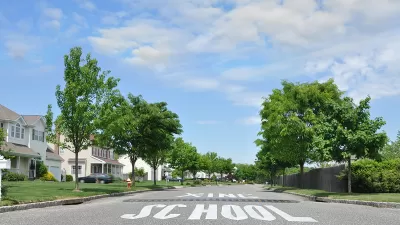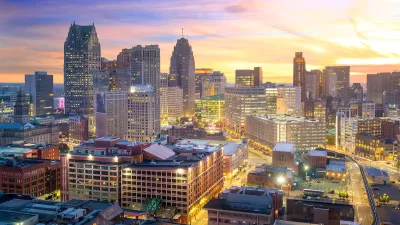It's almost like the Great Recession and the Great Urban Renaissance never happened, as Americans are moving to the suburbs and the Sunbelt than to the nation's urban areas.
Jed Kolko breaks the news of the latest population figures for 2015, as released this week by the U.S. Census Bureau. The big winners, according to Kolko's analysis: the suburbs and the Sunbelt.
Here's how Kolko summarizes the latest population data:
After volatile swings in growth patterns during last decade’s housing bubble and bust, long-term trends are reasserting themselves. Population is growing faster in the South and West than in the Northeast and Midwest, and faster in suburban areas than in urban counties; both of these trends accelerated in 2015.
Kolko provides lists of the fastest growing metro areas, the fastest growing large metro areas, and a few other lists, including lists of metro areas with the steepest population declines. Kolko also shares three trends as takeaways from the data, with more detail provided in the article:
- An accelerating shift of population toward the Sunbelt.
- A recent slowdown in population in urban counties.
- Metropolitan areas with at least one million people grew faster than midsize and smaller metros.
An article by Laura Kusisto for the Wall Street Journal, which follows on Kolko's reporting, argues that the U.S. Census data supports the thesis that the housing boom and bust of the last decade "merely created a temporary disruption" in the way Americans live.
FULL STORY: 2015 Population Winners: The Suburbs and the Sunbelt

Study: Maui’s Plan to Convert Vacation Rentals to Long-Term Housing Could Cause Nearly $1 Billion Economic Loss
The plan would reduce visitor accommodation by 25,% resulting in 1,900 jobs lost.

North Texas Transit Leaders Tout Benefits of TOD for Growing Region
At a summit focused on transit-oriented development, policymakers discussed how North Texas’ expanded light rail system can serve as a tool for economic growth.

Why Should We Subsidize Public Transportation?
Many public transit agencies face financial stress due to rising costs, declining fare revenue, and declining subsidies. Transit advocates must provide a strong business case for increasing public transit funding.

How Community Science Connects People, Parks, and Biodiversity
Community science engages people of all backgrounds in documenting local biodiversity, strengthening connections to nature, and contributing to global efforts like the City Nature Challenge to build a more inclusive and resilient future.

Alabama: Trump Terminates Settlements for Black Communities Harmed By Raw Sewage
Trump deemed the landmark civil rights agreement “illegal DEI and environmental justice policy.”

Dear Tesla Driver: “It’s not You, It’s Him.”
Amidst a booming bumper sticker industry, one writer offers solace to those asking, “Does this car make me look fascist?”
Urban Design for Planners 1: Software Tools
This six-course series explores essential urban design concepts using open source software and equips planners with the tools they need to participate fully in the urban design process.
Planning for Universal Design
Learn the tools for implementing Universal Design in planning regulations.
City of Santa Clarita
Ascent Environmental
Institute for Housing and Urban Development Studies (IHS)
City of Grandview
Harvard GSD Executive Education
Toledo-Lucas County Plan Commissions
Salt Lake City
NYU Wagner Graduate School of Public Service




























